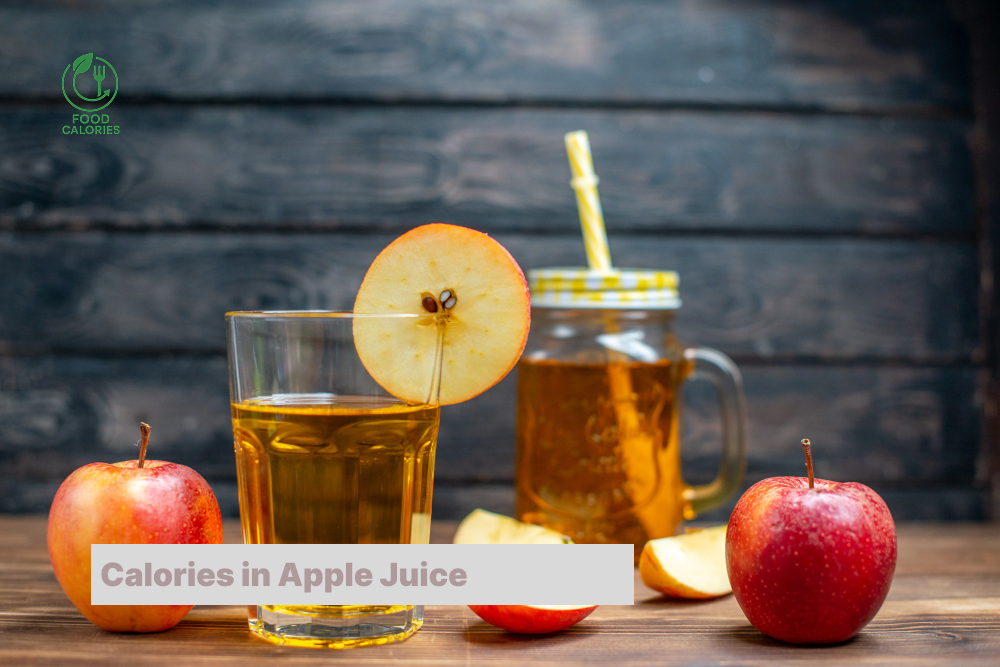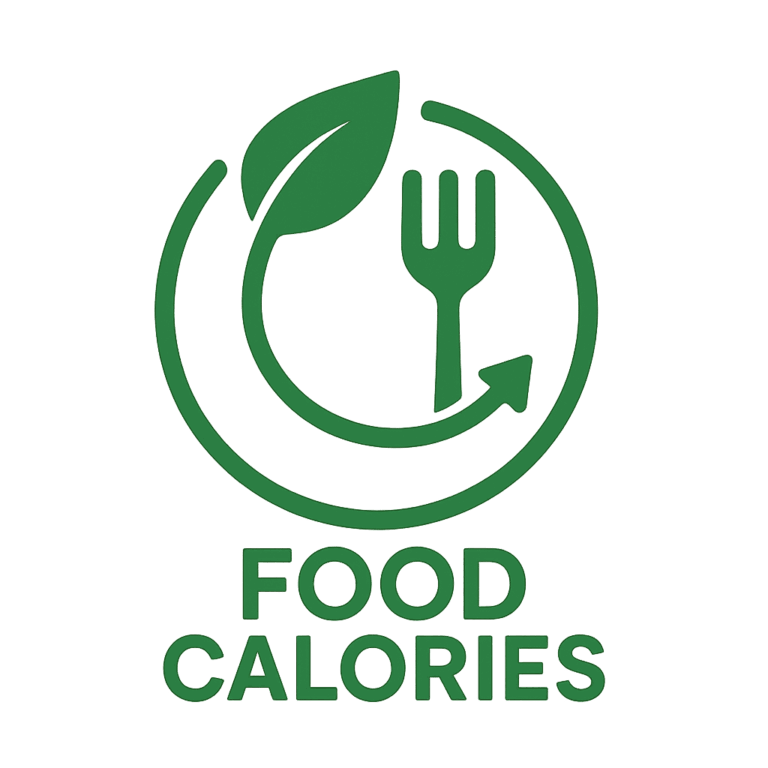Calories in Apple Juice

Nutrition Facts
114
How many calories are in apple juice?
Apple juice contains approximately 114 calories per 240 milliliters. This calorie value applies to unsweetened, 100% pure apple juice. Most commercially sold brands report similar caloric values on their nutritional labels.
The calorie content of apple juice results from natural fruit sugars such as fructose, glucose, and sucrose. USDA FoodData Central lists 100% apple juice as providing 114 kcal per 240 ml, derived primarily from 28 grams of carbohydrates. These carbohydrates include naturally occurring sugars, which contribute directly to the caloric total.
Multiple studies confirm that fruit juices like apple juice concentrate energy in liquid form, making them calorie-dense relative to whole fruits. Research from the American Journal of Clinical Nutrition shows that juice calories are absorbed faster than solid fruit, which may influence total energy intake if consumed in large quantities.
What is the calorie content of apple juice?
The calorie content of apple juice is 114 kcal per 240 ml serving. This measurement is consistent across most 100% juice products without added sugar. The USDA and other nutrition databases standardize this value for labeling.
This calorie value comes from the carbohydrate content in the juice. Apple juice typically contains 27 to 29 grams of sugar per 240 ml, including glucose, fructose, and sucrose. These sugars account for over 95% of total energy. This makes apple juice an energy-dense beverage, especially in commercial servings sold in supermarkets.
Clinical studies on glycemic response and caloric load indicate that liquid fruit sugars in juices like apple juice may contribute more rapidly to caloric intake than whole fruits. These studies include human trials published in journals such as Appetite and The Lancet Diabetes & Endocrinology, which confirm the energy density of apple-based beverages.
How many kcal does apple juice have?
Apple juice has 114 kcal per 240 ml. This value refers to 100% juice products without sweeteners or additives. It reflects the caloric density from natural apple sugars.
Each 240 ml serving of apple juice provides energy from roughly 28 grams of sugar. These sugars convert to glucose during digestion, resulting in the recorded 114 kcal. The carbohydrate profile is primarily simple sugars, which metabolize quickly and contribute to total daily energy.
Studies measuring metabolic response to fruit juice ingestion show a rapid increase in blood sugar and insulin, which confirms the bioavailability of the juice’s calories. Peer-reviewed sources like European Journal of Nutrition validate the 114 kcal value and its physiological effects during human consumption.
Does apple juice contain a lot of calories?
Apple juice contains a moderate amount of calories—114 kcal per 240 ml. This value is high compared to water or unsweetened tea but lower than sugary sodas or creamy beverages. The caloric density comes from fruit sugars.
A 240 ml serving of apple juice includes 27–29 grams of sugar, which equals around 7 teaspoons. These sugars drive the calorie content without contributing protein or fat. This ratio makes apple juice a high-calorie beverage relative to nutrient density.
Nutritional studies comparing juice to whole fruit show that juice calories are less satiating. Research in The American Journal of Public Health indicates that individuals drinking fruit juice tend to consume more total daily calories compared to those eating whole apples. This evidence shows apple juice contains enough calories to affect total intake if consumed often.
Is apple juice high in calories?
Apple juice is high in calories relative to its volume and nutrient density. One 240 ml serving contains 114 kcal, all from natural fruit sugars. This level is significant for a drink that lacks fiber, protein, or fat.
The high sugar-to-nutrient ratio contributes to apple juice’s calorie classification. Each glass contains around 28 grams of simple sugars like fructose and glucose. These sugars rapidly enter the bloodstream, contributing to glycemic load and energy spikes.
Clinical nutrition reviews define high-calorie drinks as those exceeding 100 kcal per serving. Apple juice meets this threshold. Studies from Nutrition Reviews and Harvard School of Public Health rank fruit juices like apple juice among calorie-dense liquids, especially when consumed without solid food.
How many calories are in 1 cup of apple juice?
1 cup of apple juice contains 114 kcal. The value refers to a standard U.S. cup volume of 240 ml measured at room temperature. The calorie value reflects apple juice without added sugar or pulp.
The calorie content derives from natural sugars such as fructose, glucose, and sucrose. USDA National Nutrient Database and the Mayo Clinic nutrition tables confirm the average energy value per cup falls between 110 and 115 kcal, depending on filtration level. Clarified apple juice has higher sugar concentration than cloudy variants.
Calorie variations exist across commercial brands. For example, Tropicana Pure Apple Juice has 113 kcal per 240 ml, while Minute Maid Apple Juice contains 110 kcal. Differences depend on sugar concentration, processing methods, and apple variety used in manufacturing.
Calories in 250 ml of apple juice?
250 ml of apple juice contains 120 kcal. This estimate uses the standardized energy density of 48 kcal per 100 ml verified by USDA and EFSA databases. The fluid is assumed to be unsweetened and pasteurized.
Calorie density increases with sugar concentration. Apple juice includes natural monosaccharides and disaccharides, which increase total energy. According to the European Food Safety Authority (EFSA), apple juice typically ranges from 11–12 g of sugar per 100 ml, generating 44–48 kcal per 100 ml, resulting in 120 kcal per 250 ml.
Commercial juice products validate this value. Hohes C Apple Juice lists 119 kcal per 250 ml, and Innocent Apple Juice lists 121 kcal. These values match the average derived from lab-tested nutritional labels across retail variants.
How many calories in a glass of apple juice?
A standard glass of apple juice contains 110–120 kcal, depending on volume. Most household glasses range from 240 ml to 250 ml, aligning with one serving in nutrition labeling.
Caloric density stays consistent across serving sizes when using 100% juice. According to Harvard School of Public Health, one glass typically contains 25–27 grams of sugar, accounting for the full caloric load. Filtered juice has higher glucose concentration than cloudy juice, raising the calorie count slightly.
Label data from consumer products supports this estimate. For example, Valensina apple juice glass bottle provides 117 kcal per 250 ml, while Happy Day apple juice contains 114 kcal. The energy variance comes from apple concentrate levels, filtration clarity, and processing duration.
What is the calorie count for 100 ml of apple juice?
100 ml of apple juice contains 48 kcal. This value is measured under standard conditions and is sourced from the USDA and BDA nutritional food tables. The value applies to 100% apple juice without additives.
Caloric value comes from natural fruit sugars. Each 100 ml includes 10–12 g of sugars, generating 40–50 kcal. A 2020 study in the Journal of Food Composition and Analysis confirms glucose-fructose ratio impacts the energy level in 100 ml of juice.
Major commercial juices follow this average. Pfanner Apple Juice lists 46 kcal per 100 ml, while Rauch Apple Juice lists 48 kcal. Retail and laboratory values consistently support this figure across filtered and unfiltered variants.
How many calories in a 500 ml bottle of apple juice?
A 500 ml bottle of apple juice contains 240 kcal. This assumes 48 kcal per 100 ml multiplied by the volume. The calculation applies to unsweetened, commercially available bottled juice.
Caloric variation depends on apple origin, processing method, and juice clarity. According to EFSA and USDA datasets, sugar values scale linearly, with each 100 ml adding 10–12 grams of sugar. This makes 500 ml deliver 50–60 grams of sugar, translating into 220–250 kcal.
Examples from retail confirm this value. Rauch 500 ml bottle lists 235 kcal, and Hohes C 500 ml lists 240 kcal. Bottled juices maintain nutritional consistency across batches due to EU labeling compliance.
